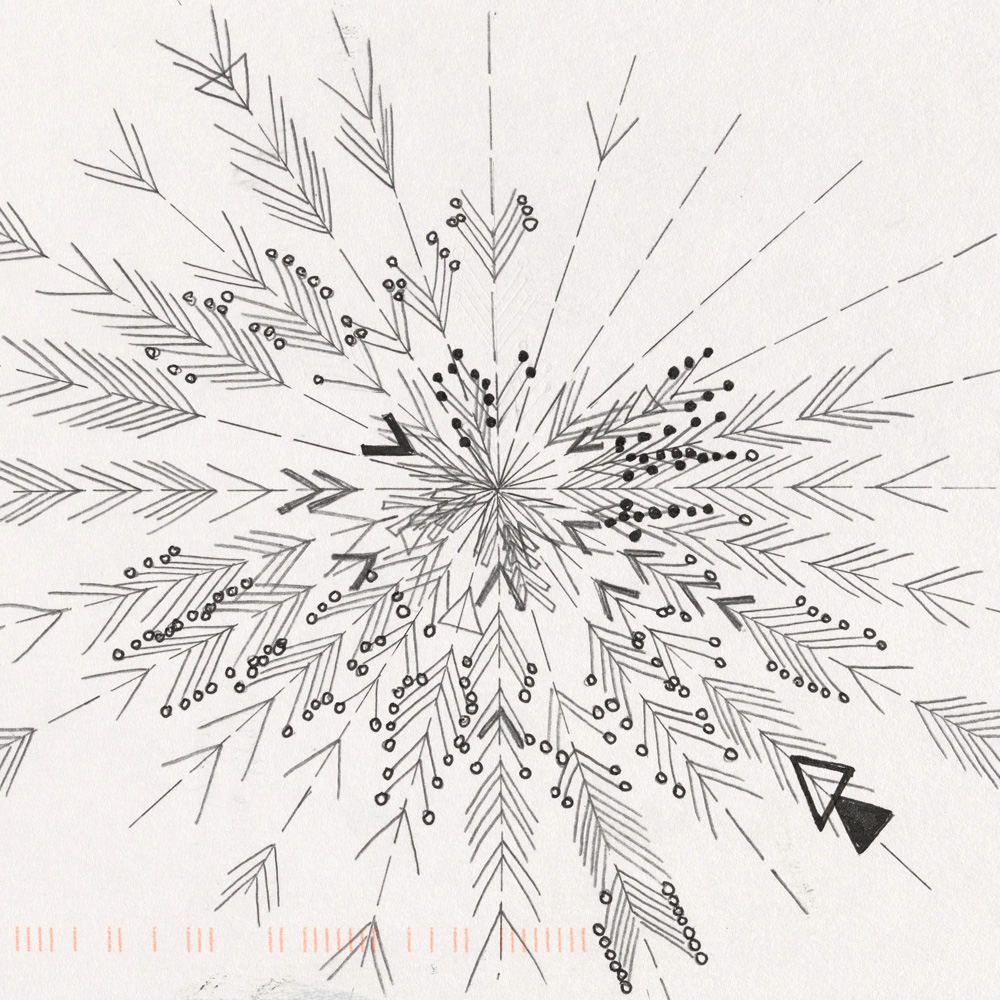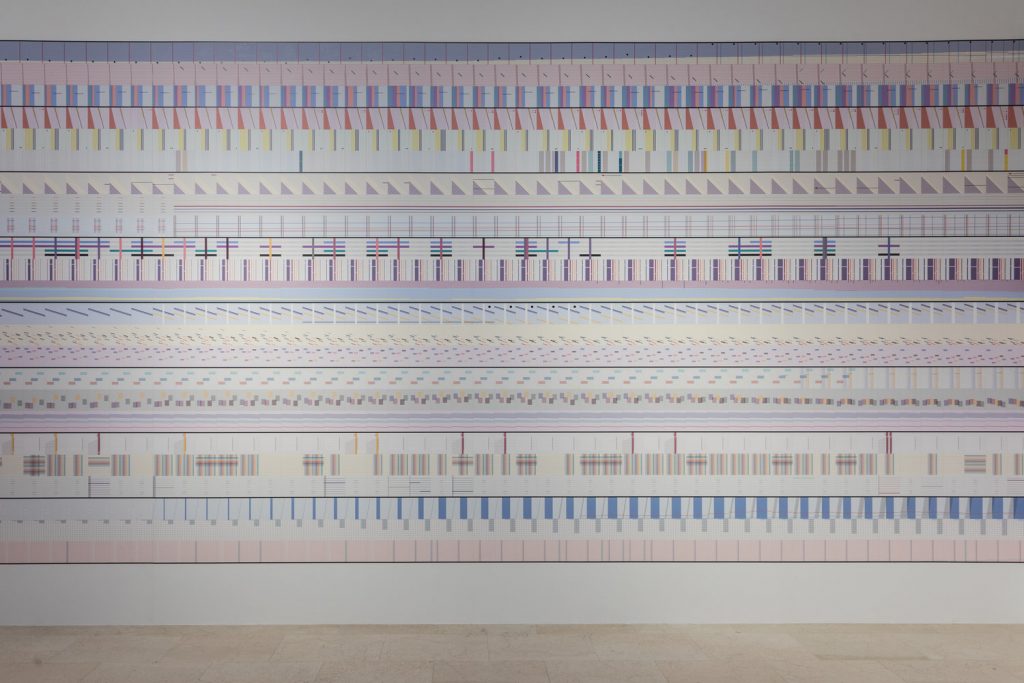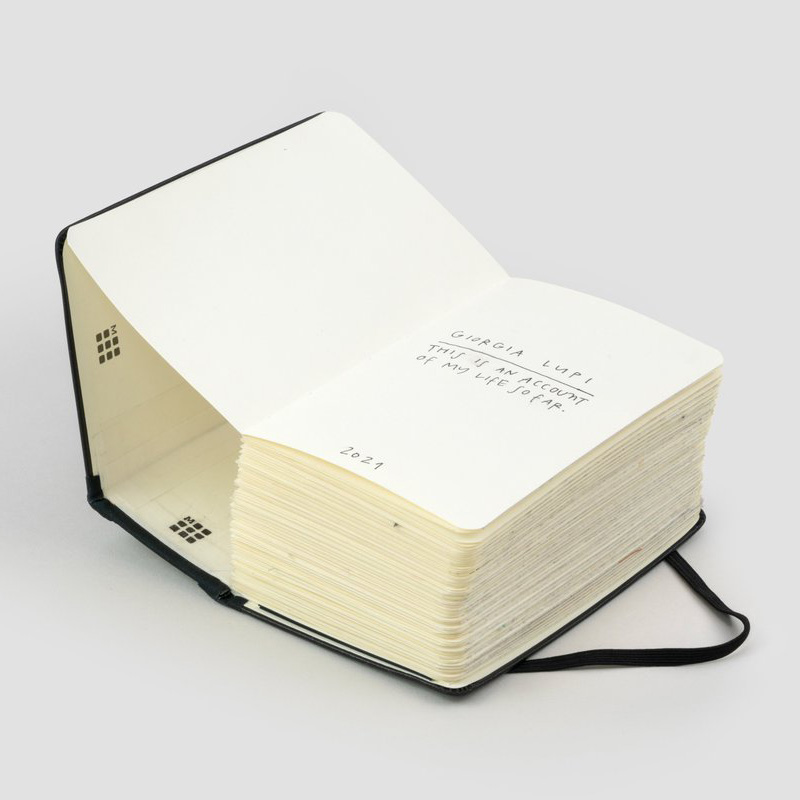Interview: Giorgia Lupi and Stefanie Posavec on “Observe Collect Draw!”
We speak with the designer friends and Dear Data founders about their new journal
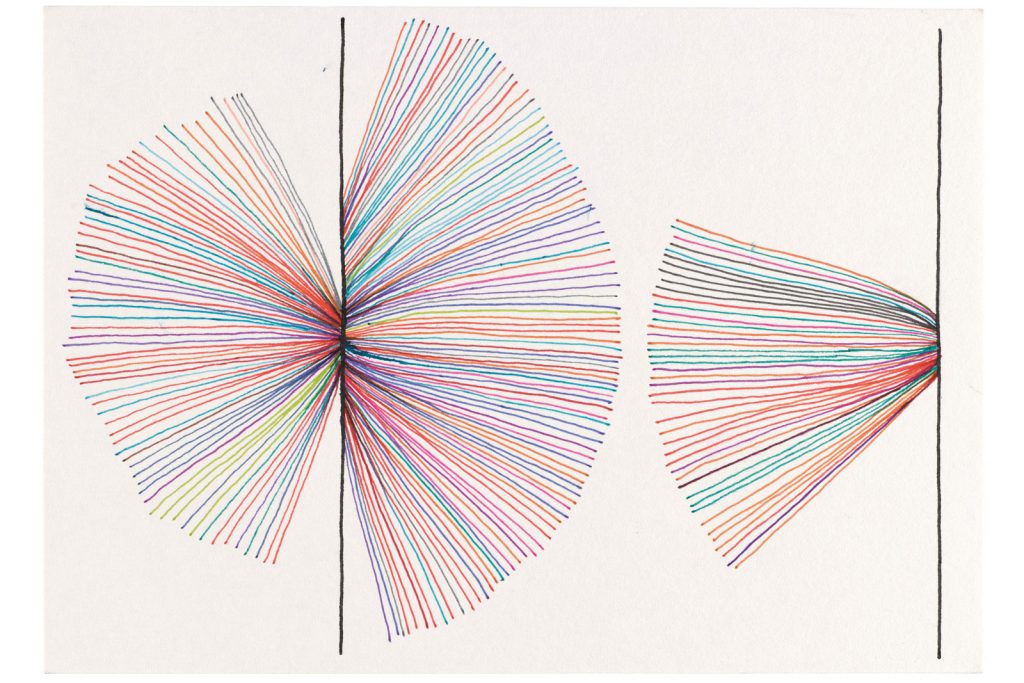
Designers, artists and friends, Stefanie Posavec and Giorgia Lupi are fans of non-traditional data gathering. The two (who live on opposite sides of the world) started collecting their own weekly statistics and illustrating postcards with the information—sending them to each other. The practice was both pragmatic and personal. Eventually, that year-long project—called Dear Data—became a book that blends art, facts, and friendship. (The entire collection of postcards was also acquired by NYC’s MoMA for its permanent collection.) Now the pair has released Observe, Collect, Draw!: A Visual Journal, which is part diary, part activity book, and part self-discovery tool and its pages are hand-written by the authors. We spoke to Posavec and Lupi about offering their meticulously honed skills in order for readers to observe and learn, tap into their creativity and head out on an endeavor toward self-discovery.
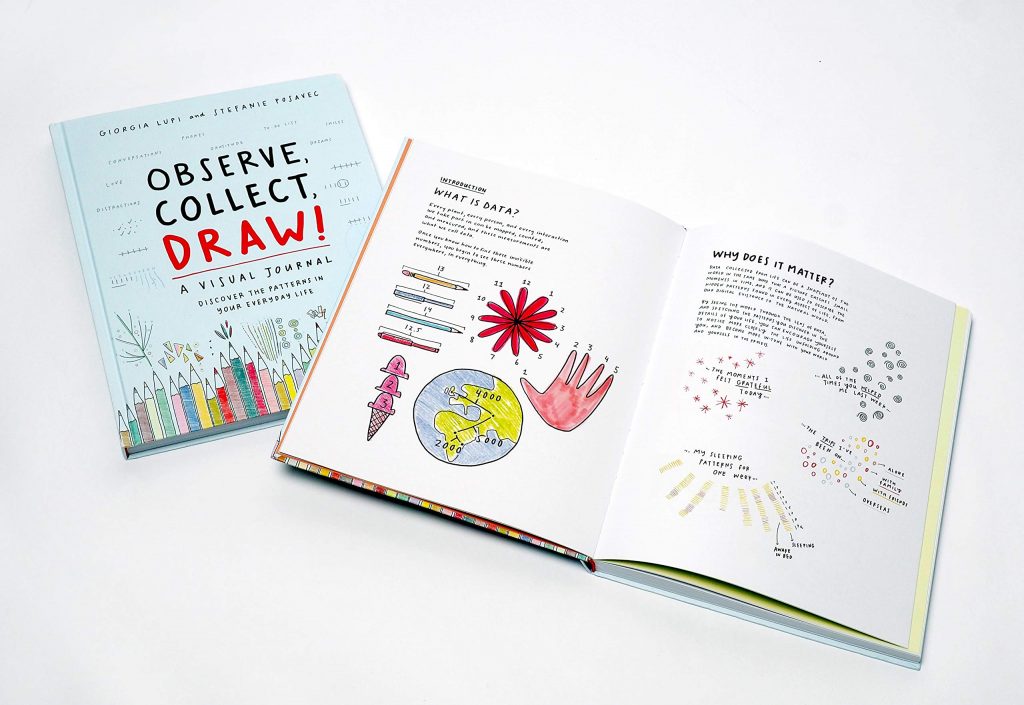
Giorgia Lupi: This book’s not about us and our experience, but is a guide for people to start seeing their days and their activities in the form of data and then using the data they collect as a creative material for their creation. So the book is aimed at everyone who wants to learn more about themselves, slow down and pay attention to their days, who think of themselves as creative but don’t necessarily have the opportunity to feel creative on a daily basis.
Stefanie Posavec: “Data” is a word that can often feel intimidating. I believe that everyone in the world is a secret data-collector, even if they don’t realize it! Collecting the countries we travel to or the concerts we visit, or carefully taking note of our finances or weight as they move up and down: these measurements and numbers are all data, and anyone can draw this data to better understand themselves. With this journal we hope to compel a wider audience that data isn’t necessarily scary or intimidating, but can be a new way of seeing and documenting the world.
The journal is really about noticing, paying attention and slowing down
SP: I believe that people have often felt that data and data visualization is something emotionless and cold, something neutral and without a sense of humanity. However with this journal we are trying to show that all datasets, all data visualizations inherently have an author that is a warm, imperfect human, and therefore can be seen as something “warm” instead.
GL: I think I should Venn diagram people who are interested in self-exploration and self-improvement, and people that want to be more creative in their life. There’s really a sweet spot between the two of them, which I feel nowadays is quite a few people. The journal is really about noticing, paying attention, slowing down and asking yourself some questions that you want to learn more about yourself, and using data for being creative and drawing.
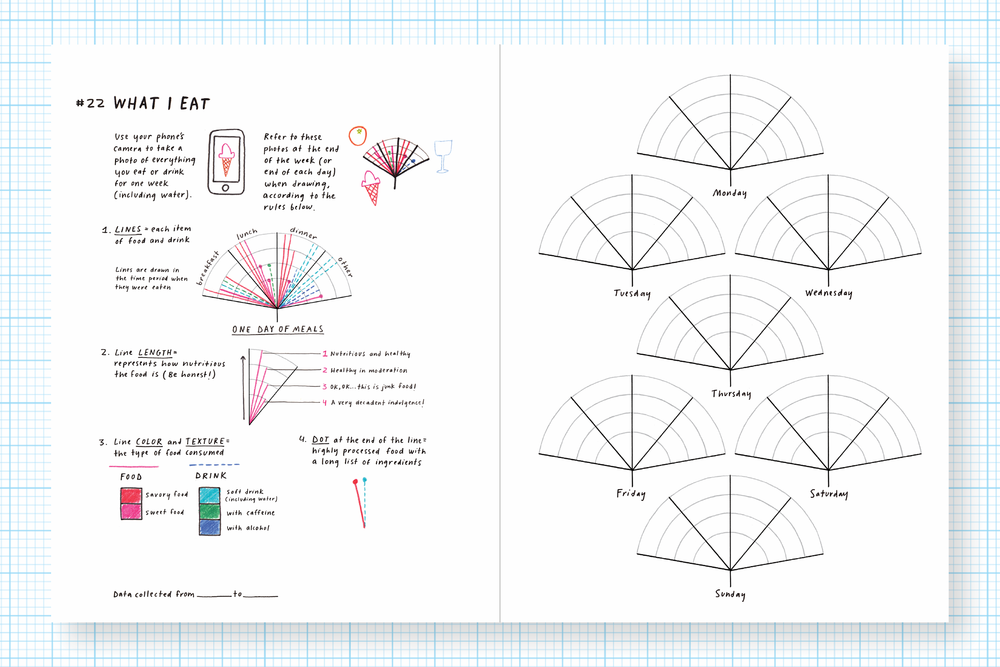
Can you explain a little about your approach to the activities in the book?
SP: With so many people starting their own Dear Data projects, we thought we would create a journal that would make the process less intimidating to a newcomer, to give them the confidence to see data as a starting point for creativity and to make the blank page feel less intimidating.
GL: I feel that a lot of people would like to draw, but they’re really afraid of the blank page, whereas with data you have some rules, so it’s not about your choice anymore. It’s about following the rules that—in the first part—we decided, but in the end you decide to then be able to create symbols and do colors. It’s really easy to get into drawing with data if you know the rules.
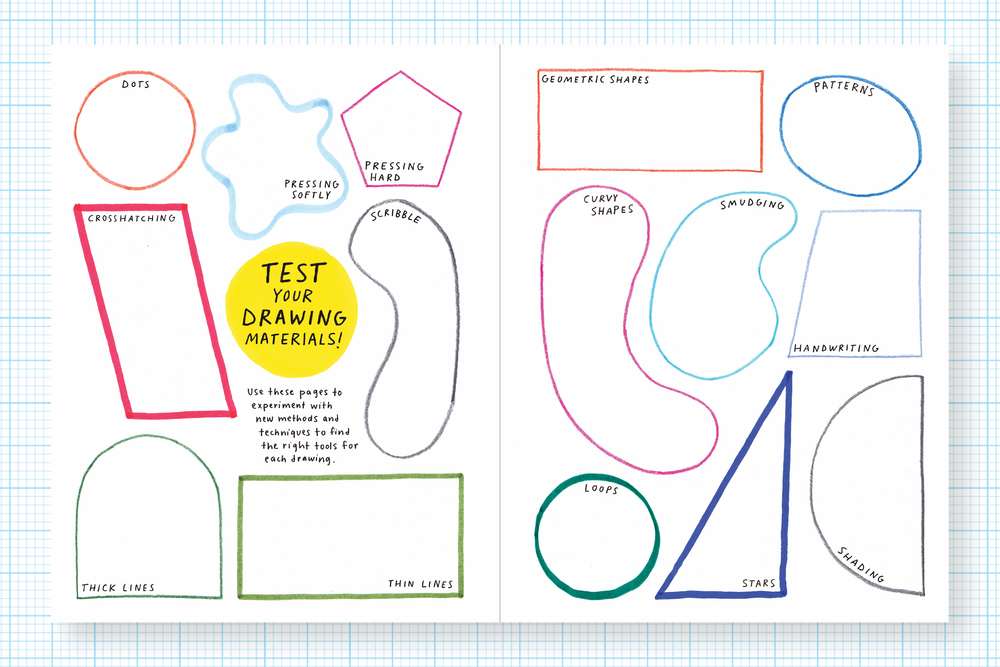
The book was done all by hand—how important is communicating with people via handwritten/hand-drawn means?
SP: I think since the whole Dear Data project was completely hand-drawn it makes sense that our communications are always in keeping with this analog aesthetic. Also, by keeping everything hand-drawn we hope to show that using data as a material for creative output doesn’t require incredible data analysis skills or fancy software but all you really need is a pencil and paper to start collecting and drawing your data.
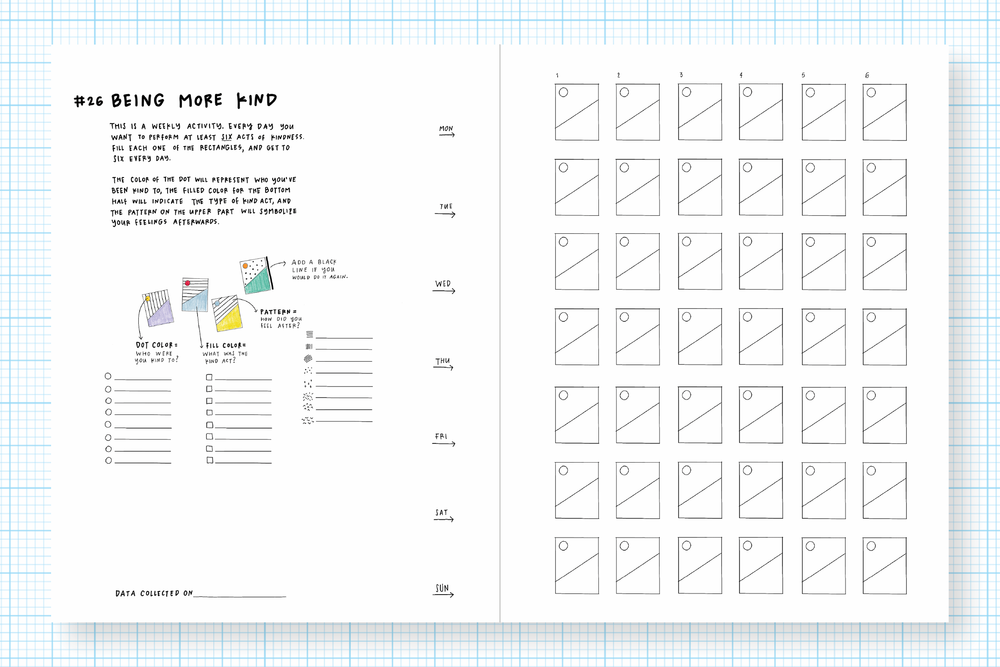
A lot of the activities seem to be very introspective. Do you feel that working through a book like this can help people emotionally—a version of therapy?
SP: Giorgia and I both agree that by taking the time to collect data about the world around you, you are taking the time to notice your world more closely and reflect upon it more carefully and that offers great benefits (or at least anecdotally, it has to us, though of course ‘logging’ various aspects of one’s life is often used for personal development).
GL: And the more that you do it, the more you learn how to pay attention to all of the things that are around you—especially with the things that are most interesting to you at the moment.
SP: With the Dear Data project and this journal we are trying to move beyond the usual quantified self data into something more akin to personal documentary, where the main pursuit is to use data capture to make sense of our world, to connect and be present in our days and week, and also to create a souvenir of our lives to either send to another person or keep for future selves… where the process of gathering the data is often sometimes more personally valuable than the drawn outcome.
Images courtesy of Dear Data
